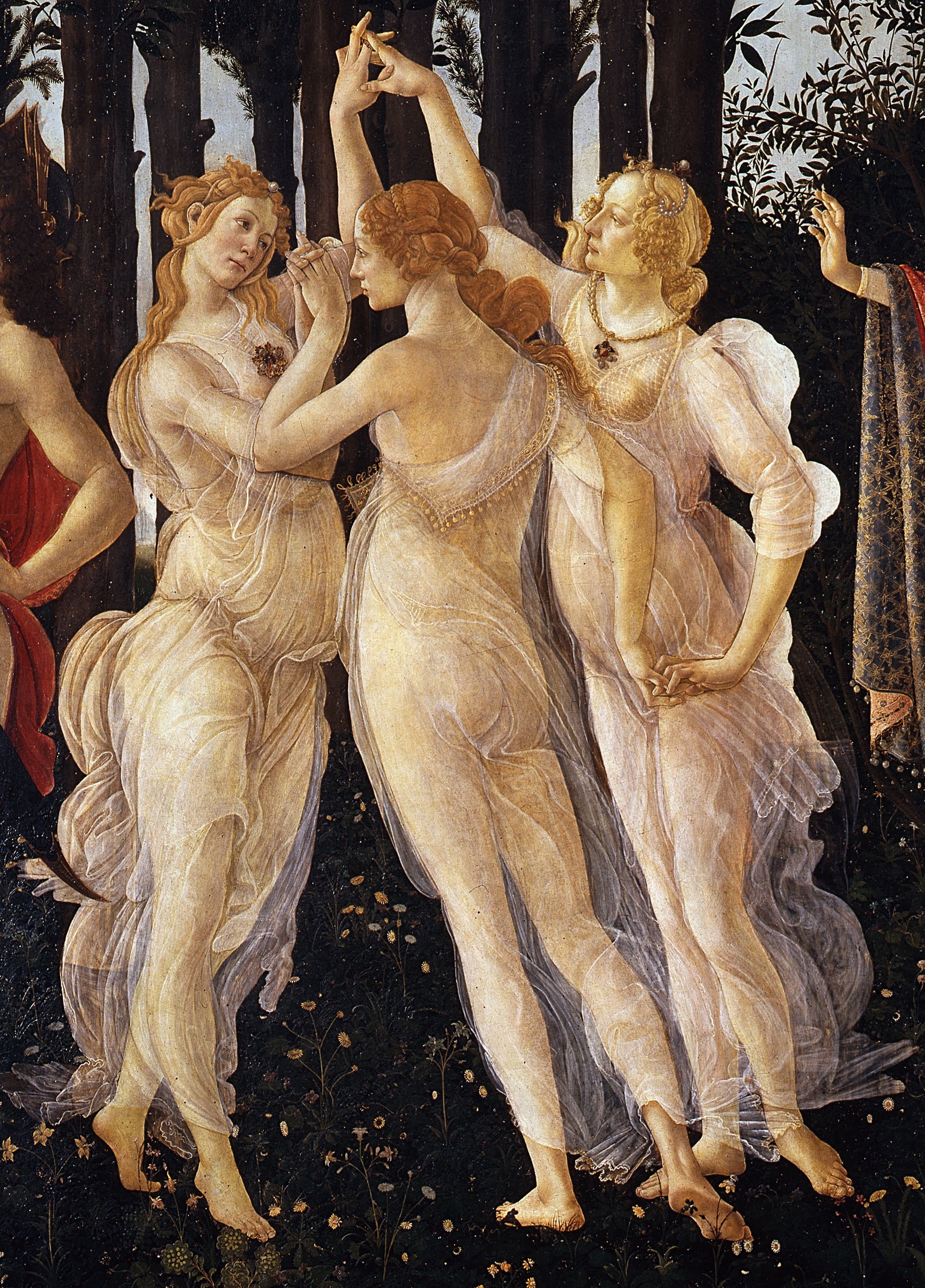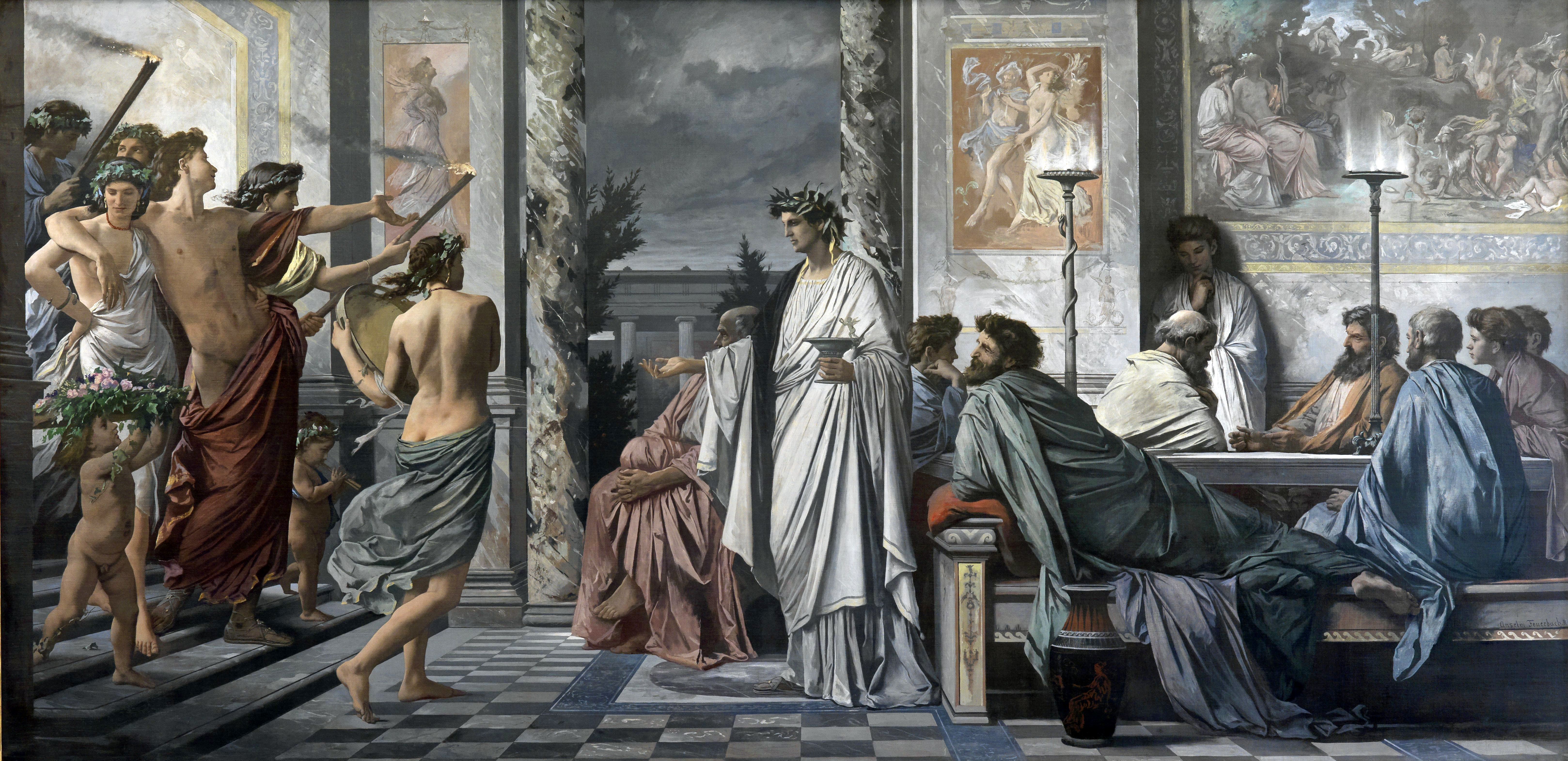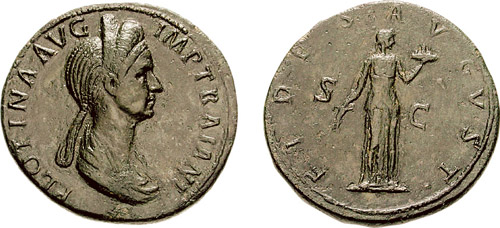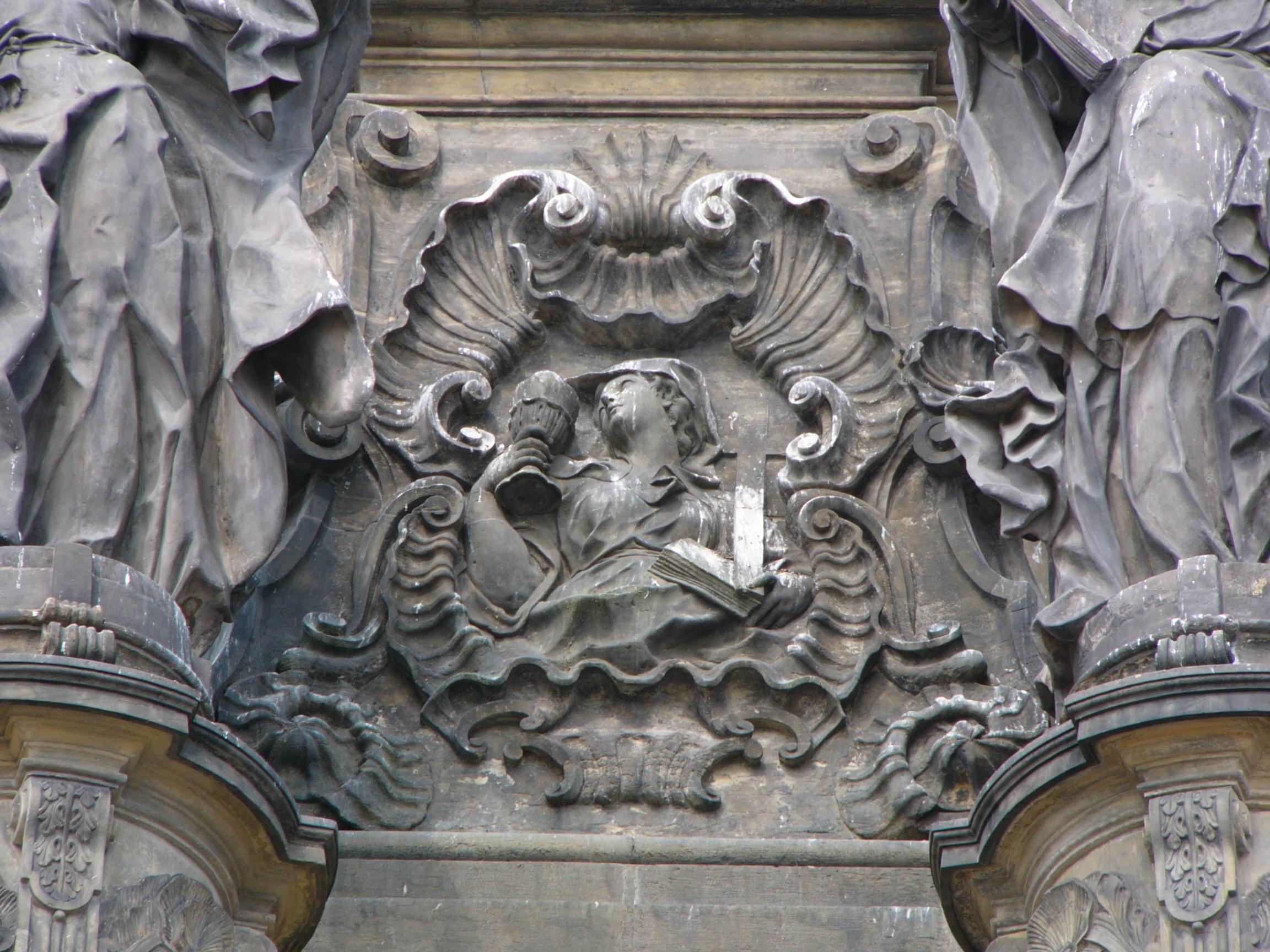|
Pistis
In Greek mythology, ''Pistis'' (; Ancient Greek: Πίστις) was the personification of good faith, trust and reliability. In Christianity and in the New Testament, ''pistis'' is typically translated as "faith". The word is mentioned together with such other personifications as ''Elpis'' (Hope), ''sophrosyne'' (Prudence), and the ''Charites'', who were all associated with honesty and harmony among people. Her Roman equivalent was ''Fides'', a personified concept significant in Roman culture. Additionally, a close linkage between ''pistis'' and persuasion developed through the discussion of faith (belief) and was further morphed by an understanding of ''pistis'' as a rhetorical technique. In rhetoric ''Pistis'' in rhetoric can mean "proof" and is the element to induce true judgment through enthymemes, hence to give "proof" of a statement. There are three modes by which this is employed. The first mode is the "subject matter capable of inducing a state of mind within the a ... [...More Info...] [...Related Items...] OR: [Wikipedia] [Google] [Baidu] |
Faith
Faith is confidence or trust in a person, thing, or concept. In the context of religion, faith is " belief in God or in the doctrines or teachings of religion". According to the Merriam-Webster's Dictionary, faith has multiple definitions, including "something that is believed especially with strong conviction", "complete trust", "belief and trust in and loyalty to God", as well as "a firm belief in something for which there is no proof". Religious people often think of faith as confidence based on a perceived degree of warrant, or evidence, while others who are more skeptical of religion tend to think of faith as simply belief without evidence. In the Roman world, 'faith' (Latin: ) was understood without particular association with gods or beliefs. Instead, it was understood as a paradoxical set of reciprocal ideas: voluntary will and voluntary restraint in the sense of father over family or host over guest, whereby one party willfully surrenders to a party who could harm b ... [...More Info...] [...Related Items...] OR: [Wikipedia] [Google] [Baidu] |
Sophrosyne
Sophrosyne () is an ancient Greek concept of an ideal of excellence of character and soundness of mind, which when combined in one well-balanced individual leads to other qualities, such as temperance, moderation, prudence, purity, decorum, and self-control. An adjectival form is "sophron". It is similar to the concepts of () of Chinese Confucianism and () of Indian thought. Ancient Greek literature In Ancient Greek literature, sophrosyne is considered an important quality and is sometimes contrasted with hubris. A noted example of this occurs in Homer's '' The Iliad''. When Agamemnon decides to take the queen Briseis away from Achilles, it is seen as Agamemnon behaving with hubris and lacking sophrosyne. In Homer's ''Odyssey'', Odysseus avoids being turned into an animal by Circe the enchantress by means of a magical herb, moly (symbolizing, by some accounts, sophrosyne), given to him by Athena (Wisdom) and Hermes (Reason). Heraclitus's fragment 112 states: Them ... [...More Info...] [...Related Items...] OR: [Wikipedia] [Google] [Baidu] |
Greek Mythology
Greek mythology is the body of myths originally told by the Ancient Greece, ancient Greeks, and a genre of ancient Greek folklore, today absorbed alongside Roman mythology into the broader designation of classical mythology. These stories concern the ancient Greek religion's view of the Cosmogony, origin and Cosmology#Metaphysical cosmology, nature of the world; the lives and activities of List of Greek deities, deities, Greek hero cult, heroes, and List of Greek mythological creatures, mythological creatures; and the origins and significance of the ancient Greeks' cult (religious practice), cult and ritual practices. Modern scholars study the myths to shed light on the religious and political institutions of ancient Greece, and to better understand the nature of mythmaking itself. The Greek myths were initially propagated in an oral tradition, oral-poetic tradition most likely by Minoan civilization, Minoan and Mycenaean Greece, Mycenaean singers starting in the 18th century&n ... [...More Info...] [...Related Items...] OR: [Wikipedia] [Google] [Baidu] |
Ancient Greek
Ancient Greek (, ; ) includes the forms of the Greek language used in ancient Greece and the classical antiquity, ancient world from around 1500 BC to 300 BC. It is often roughly divided into the following periods: Mycenaean Greek (), Greek Dark Ages, Dark Ages (), the Archaic Greece, Archaic or Homeric Greek, Homeric period (), and the Classical Greece, Classical period (). Ancient Greek was the language of Homer and of fifth-century Athens, fifth-century Athenian historians, playwrights, and Ancient Greek philosophy, philosophers. It has contributed many words to English vocabulary and has been a standard subject of study in educational institutions of the Western world since the Renaissance. This article primarily contains information about the Homeric Greek, Epic and Classical periods of the language, which are the best-attested periods and considered most typical of Ancient Greek. From the Hellenistic period (), Ancient Greek was followed by Koine Greek, which is regar ... [...More Info...] [...Related Items...] OR: [Wikipedia] [Google] [Baidu] |
Good Faith
In human interactions, good faith () is a sincere intention to be fair, open, and honest, regardless of the outcome of the interaction. Some Latin phrases have lost their literal meaning over centuries, but that is not the case with , which is still widely used and interchangeable with its generally accepted modern-day English translation of ''good faith''. It is an important concept within law and business. The opposed concepts are bad faith, (duplicity) and perfidy (pretense). is a Latin phrase meaning "good faith". Its ablative case is , meaning "in good faith", which is often used in English as an adjective to mean "genuine". While may be translated as "faith", it embraces a range of meanings within a core concept of "reliability", in the sense of a trust between two parties for the potentiality of a relationship. For the ancient Romans, ''bona fides'' was to be assumed by both sides, with implied responsibilities and both legal and religious consequences if bro ... [...More Info...] [...Related Items...] OR: [Wikipedia] [Google] [Baidu] |
Elpis (mythology)
In Greek mythology, Elpis () is the minor goddess (daimon) of hope, about which the Greeks had ambivalent feelings. She was never the centre of a cult, as was Spes, her Roman equivalent, and was chiefly the subject of ambiguous Greek aetiological myths. Hesiod's ''Works and Days'' Elpis was the remaining item enclosed in Pandora's box (or jar), the best known form of the myth found in Hesiod’s ''Works and Days''. There Hesiod expands upon the misery inflicted on mankind through the curiosity of Pandora. She had brought with her as a wedding gift from heaven a storage jar but when this was opened it released a host of human ills before the lid could be secured again. Only Hope was left within her unbreakable house, she remained under the lip of the jar and did not fly away. Before he could Pandora replaced the lid of the jar. This was the will of aegis-bearing Zeus the Cloudgatherer. Based on Hesiod's description, there has been debate whether Elpis was only a delusive ... [...More Info...] [...Related Items...] OR: [Wikipedia] [Google] [Baidu] |
Charites
In Greek mythology, the Charites (; ), singular Charis (), also called the Graces, are goddesses who personify beauty and grace. According to Hesiod, the Charites were Aglaia (Grace), Aglaea, Euphrosyne, and Thalia (Grace), Thalia, who were the daughters of Zeus and Eurynome (Oceanid), Eurynome, the daughter of Oceanus. However in other accounts, their names, number and parentage varied. In Roman mythology they were known as the Gratiae. Hesiod has Aglaea as the wife of Hephaestus, and in the ''Iliad'' Hera promises to give a Charis named Pasithea to Hypnos as bride. Otherwise they have little independent mythology, usually described as attending various gods and goddesses, especially Aphrodite. In Roman and later art, the three Charites are generally depicted nude in an interlaced group, but during the Archaic Greece, Archaic and Classical Greece, Classical periods of Greece, they were typically depicted as fully clothed, and in a line, with dance poses. Parentage, number, and ... [...More Info...] [...Related Items...] OR: [Wikipedia] [Google] [Baidu] |
Theognis
Theognis of Megara (, ''Théognis ho Megareús'') was a Greek lyric poet active in approximately the sixth century BC. The work attributed to him consists of gnomic poetry quite typical of the time, featuring ethical maxims and practical advice about life. He was the first Greek poet known to express concern over the eventual fate and survival of his own work and, along with Homer, Hesiod and the authors of the Homeric Hymns, he is among the earliest poets whose work has been preserved in a continuous manuscript tradition (the work of other archaic poets is preserved as scattered fragments). In fact more than half of the extant elegiac poetry of Greece before the Alexandrian period is included in the approximately 1,400 lines of verse attributed to him, though several poems traditionally attributed to him were composed by others, e.g. Solon and Euenus. Some of these verses inspired ancient commentators to value him as a moralist yet the entire corpus is valued today for its " ... [...More Info...] [...Related Items...] OR: [Wikipedia] [Google] [Baidu] |
Roman Mythology
Roman mythology is the body of myths of ancient Rome as represented in the literature and visual arts of the Romans, and is a form of Roman folklore. "Roman mythology" may also refer to the modern study of these representations, and to the subject matter as represented in the literature and art of other cultures in any period. Roman mythology draws from the mythology of the Italic peoples and shares mythemes with Proto-Indo-European mythology. The Romans usually treated their traditional narratives as historical, even when these have miraculous or supernatural elements. The stories are often concerned with politics and morality, and how an individual's personal integrity relates to his or her responsibility to the community or Roman state. Heroism is an important theme. When the stories illuminate Roman religious practices, they are more concerned with ritual, augury, and institutions than with theology or cosmogony. Roman mythology also draws on Greek mythology, pri ... [...More Info...] [...Related Items...] OR: [Wikipedia] [Google] [Baidu] |
Fides (deity)
Fides () was the goddess of trust, faithfulness, and good faith ('' bona fides'') in ancient Roman religion. Fides was one of the original virtues to be cultivated as a divinity with ceremonies and temples. Fides embodies everything that is required for "honour and credibility, from fidelity in marriage, to contractual arrangements, and the obligation soldiers owed to Rome." Fides also means reliability, "reliability between two parties, which is always reciprocal." and "bedrock of relations between people and their communities", and then it was turned into a Roman deity and from which we gain the English word, 'fidelity'. Under the name ''Fides Publica Populi Romani'' ("Public Trust of the Roman People"), she may be exemplified in Marcus Atilius Regulus, "who refuses to save himself at the expense of the Republic. Regulus defied his own best interests for those of his country. In this act alone, he acted with fides." Iconography Fides is represented as a ... [...More Info...] [...Related Items...] OR: [Wikipedia] [Google] [Baidu] |
Enthymemes
An enthymeme (, ''enthýmēma'') is an argument with a hidden premise. Enthymemes are usually developed from premises that accord with the audience's view of the world and what is taken to be common sense. However, where the general premise of a syllogism is supposed to be true, making the subsequent deduction necessary, the general premise of an enthymeme is merely probable, which leads only to a tentative conclusion. Originally theorized by Aristotle, there are four types of enthymeme, at least two of which are described in Aristotle's work. Aristotle referred to the enthymeme as "the body of proof", "the strongest of rhetorical proofs...a kind of syllogism" (''Rhetoric'' I, 1.3,11). He considered it to be one of two kinds of proof, the other of which was the paradeigma. Maxims, Aristotle thought, were a derivative of enthymemes. (''Rhetoric'' II.XX.1). Aristotle discusses two types of enthymemes: demonstrative 'deiktika''and refutative 'elentika'' or ''rézoi'' (ῥέζοι) ... [...More Info...] [...Related Items...] OR: [Wikipedia] [Google] [Baidu] |
Faith In Christianity
Faith in Christianity is often discussed in terms of believing God in Christianity, God's promises, trusting in his faithfulness, and relying on God's character and faithfulness to act. Some denominations believe in the New Covenant and in the doctrine of Salvation in Christianity, salvation by justification by faith, faith alone (). According to most Christian traditions and denominations, Christian faith requires a belief in the resurrection of Jesus, and the Agony in the Garden which Jesus states is the plan of God the Father. Since the Protestant Reformation of the 16th century, the meaning of the term ''faith'' has been an object of major Christian theology, theological disagreement in Western Christianity. The differences have been largely overcome in the Joint Declaration on the Doctrine of Justification (1999). The precise understanding of the term "faith" differs among the Christian denomination, various Christian traditions. Despite these differences, Christians generally ... [...More Info...] [...Related Items...] OR: [Wikipedia] [Google] [Baidu] |






